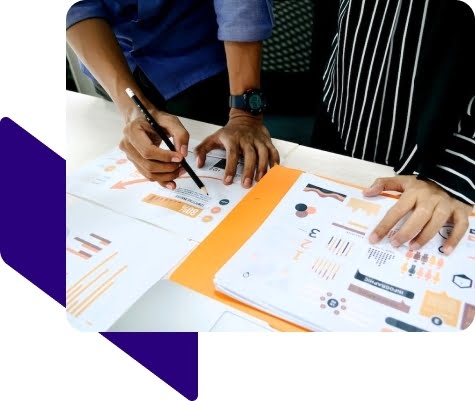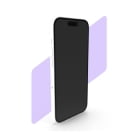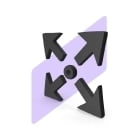The user experience should be a focal point in every digital transformation strategy.
dApps UX/UI design
Designers must assist users in overcoming the blockchain learning curve by making Web3 apps more user-friendly, accessible, digestible, and secure.
To achieve Web3’s goal of decentralization, users must have control over what happens or will happen when specific actions are performed.
Only UI/UX design that addresses all four layers of Web3 apps (Visual Layer, Functional Layer, Access Layer, and Technology Layer) can accomplish this.
In our UX/UI design, we
Consider that not every user who visits a blockchain platform is familiar with digital assets.
Put in an information architecture appropriate for Web3 while keeping user navigation seamless.
Increase security and control by using more icons and fewer technical terms to reduce complexity.
dApps UX/UI design
Designers must assist users in overcoming the blockchain learning curve by making Web3 apps more user-friendly, accessible, digestible, and secure.
To achieve Web3’s goal of decentralization, users must have control over what happens or will happen when certain actions are performed.
Only UI/UX design that addresses all four layers of Web3 apps (Visual Layer, Functional Layer, Access Layer, and Technology Layer) can accomplish this.
In our UX/UI design, we
Consider that not every user who visits a blockchain platform is familiar with digital assets.
Put in an information architecture appropriate for Web3 while keeping user navigation seamless.
Increase security and control by using more icons and fewer technical terms to reduce complexity.
We design digital products
Websites, Web applications, Mobile apps, B2B workplace software, Games and Web3 apps
We design digital products
Websites, Web applications, Mobile apps, B2B workplace software, Games and Web3 apps
Our Process
We use the Agile Process, which consists of three phases:
Research
In this phase, our UX/UI team aims to understand your business, your product, and your audience.
#UX Workshops We ask a set of questions for the project leaders and the various internal teams in contact with the customers, such as sales, marketing, and data analytics. #UX/UI Audit We audit your digital product for usability, clarity, features, and task completion, and review analytics data to find funnel bottlenecks and issues. #Competitive Analysis We study the different players in your space and assess their digital products, to be able to build your competitive edge. #User Research We develop a deep understanding of your users through a combination of interviews and analytics and take action accordingly.



Strategy and Planning
In this phase, we create the roadmaps, decide on the structure and design the flow.
#User Journey Mapping We develop personas and articulate all touchpoints, all while identifying potential pain points and opportunities. #Card Sorting We prioritize the features of the digital product according to our user research. #Information Architecture We organize the information within digital products to create a flow allowing users to seamlessly navigate between screens. #Design Roadmap The roadmap details the design tasks for each sprint to provide clarity on what will be completed and by when.

UX/UI Design
In this phase, It’s time to give life to the vision through implementation!
#Wireframes & Flows We draw low, mid, and high-fidelity wireframes to define pages’ layouts and interactions, implementing a user-centric approach. #Visual & Interaction Design We design interfaces users love, navigate and interact with comfortably while reflecting the brand. #User Testing We pick a group of users who fall within the target audience and let them engage with the designed product to get real-time feedback. #Design Handoff We provide all the required assets using Figma, a cloud-based tool enabling collaborative work between designers and developers.

Our Process
We use the Agile Process, which consists of three phases:

Research
In this phase, our UX/UI team aims to understand your business, your product, and your audience.
#UX Workshops We ask a set of questions for the project leaders and the various internal teams in contact with the customers, such as sales, marketing, and data analytics. #UX/UI Audit We audit your digital product for usability, clarity, features, and task completion, and review analytics data to find funnel bottlenecks and issues. #Competitive Analysis We study the different players in your space and assess their digital products, to be able to build your competitive edge. #User Research We develop a deep understanding of your users through a combination of interviews and analytics and take action accordingly.

Strategy and Planning
In this phase, we create the roadmaps, decide on the structure and design the flow.
#User Journey Mapping We develop personas and articulate all touchpoints, all while identifying potential pain points and opportunities. #Card Sorting We prioritize the features of the digital product according to our user research. #Information Architecture We organize the information within digital products to create a flow allowing users to seamlessly navigate between screens. #Design Roadmap The roadmap details the design tasks for each sprint to provide clarity on what will be completed and by when.

UX/UI Design
In this phase, It’s time to give life to the vision through implementation!
#Wireframes & Flows We draw low, mid, and high-fidelity wireframes to define pages’ layouts and interactions, implementing a user-centric approach. #Visual & Interaction Design We design interfaces users love, navigate and interact with comfortably, while also reflecting the brand. #User Testing We pick a group of users who fall within the target audience and let them engage with the designed product to get real-time feedback. #Design Handoff We provide all the required assets using Figma, a cloud-based tool enabling collaborative work between designers and developers.
FAQs
Statics reveal that every $1 invested in the user experience (UX) generates $100 in return!
User Experience (UX) design curates a user’s interaction with a website or app from start to finish.
User Interface (UI) focuses on the visual components of the digital product to make it clear, appealing, and easy to use.
In simple words:
UX is how a digital product works and is experienced by a user.
UI is how that same digital product looks, feels and interacts.
User experience (UX) usually comes first in the product development process, followed by the user interface (UI).
The UX designer maps out the user journey from scratch and defines the interaction at each touchpoint and the desired result at the end. And the UI designer takes charge of the visuals and interactive elements.
But here’s an interesting fact, few know about!
UX/UI points to the process of designing user interfaces.
UI/UX points to the process of designing user experiences.
There is no range or fixed prices. The cost is related to the project scope, timeline, level of complexity, features, and deliverables.
The duration of a UX/UI project is determined by 4 factors:
Your budget, our availability, the deliverables, and the level of complexity of the digital product.
As our team is composed of experienced and professional UX/UI designers, all solutions delivered are custom.
However, when a customer has a short deadline, our expertise in specific industries helps us conceive, design and deliver UX/UI designs inspired by other digital products we have developed.
We mainly cater our full range of services and products to 7 industries.
Fintech, Media, Insurance, Retail, Healthcare, and E-Goverment, Gaming & Entertainment.
We use a set of tools used by UX/UI designers worldwide.
For prototyping and collaborating, we use: Protopie, Marvel App, Invision, Adobe XD, Abstract App, Zeplin, Miro.
For creative and interactive designs and wireframes, we use: Figma, SketchApp, Adobe XD, Adobe Illustrator, and Adobe Photoshop.





